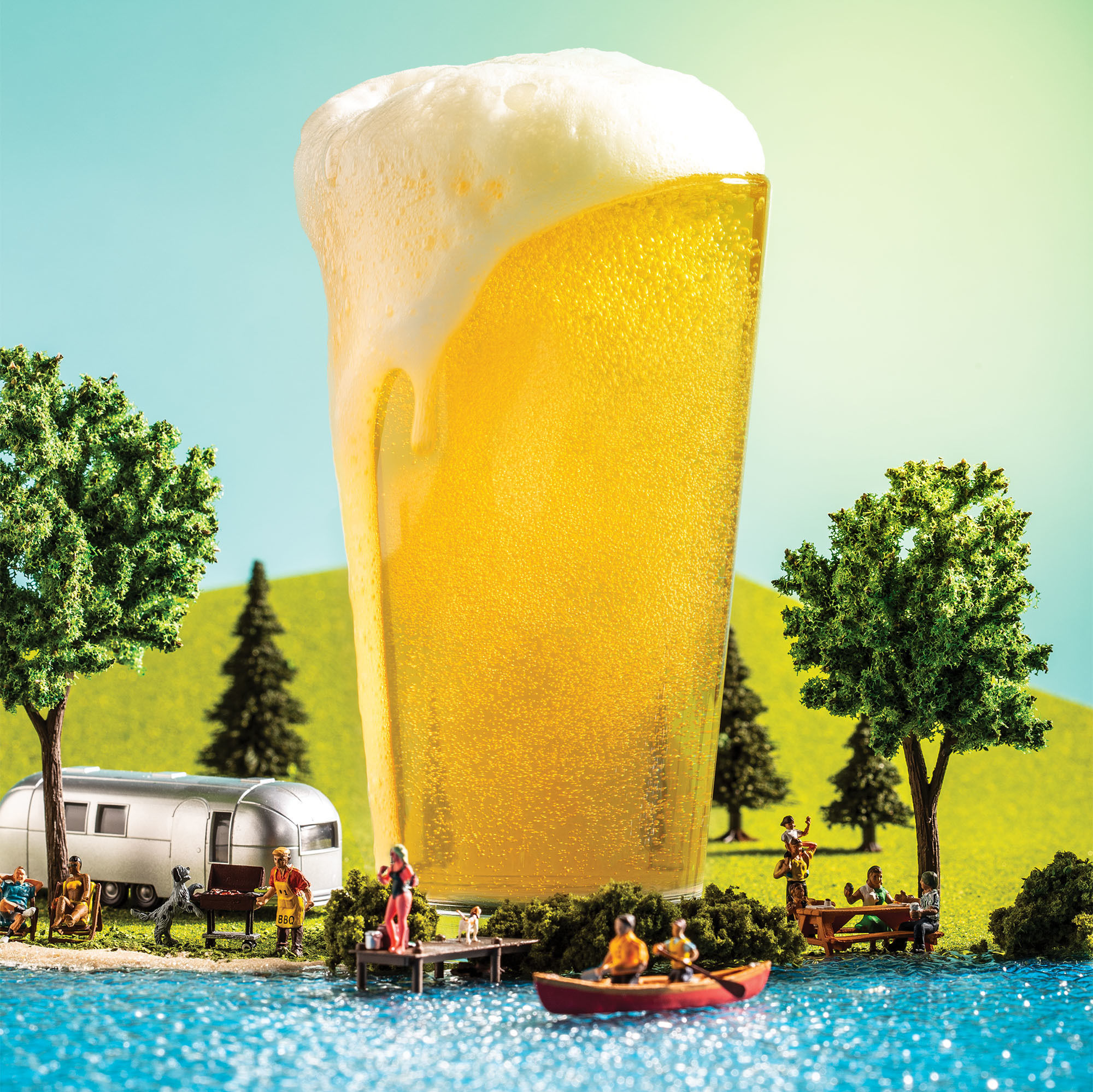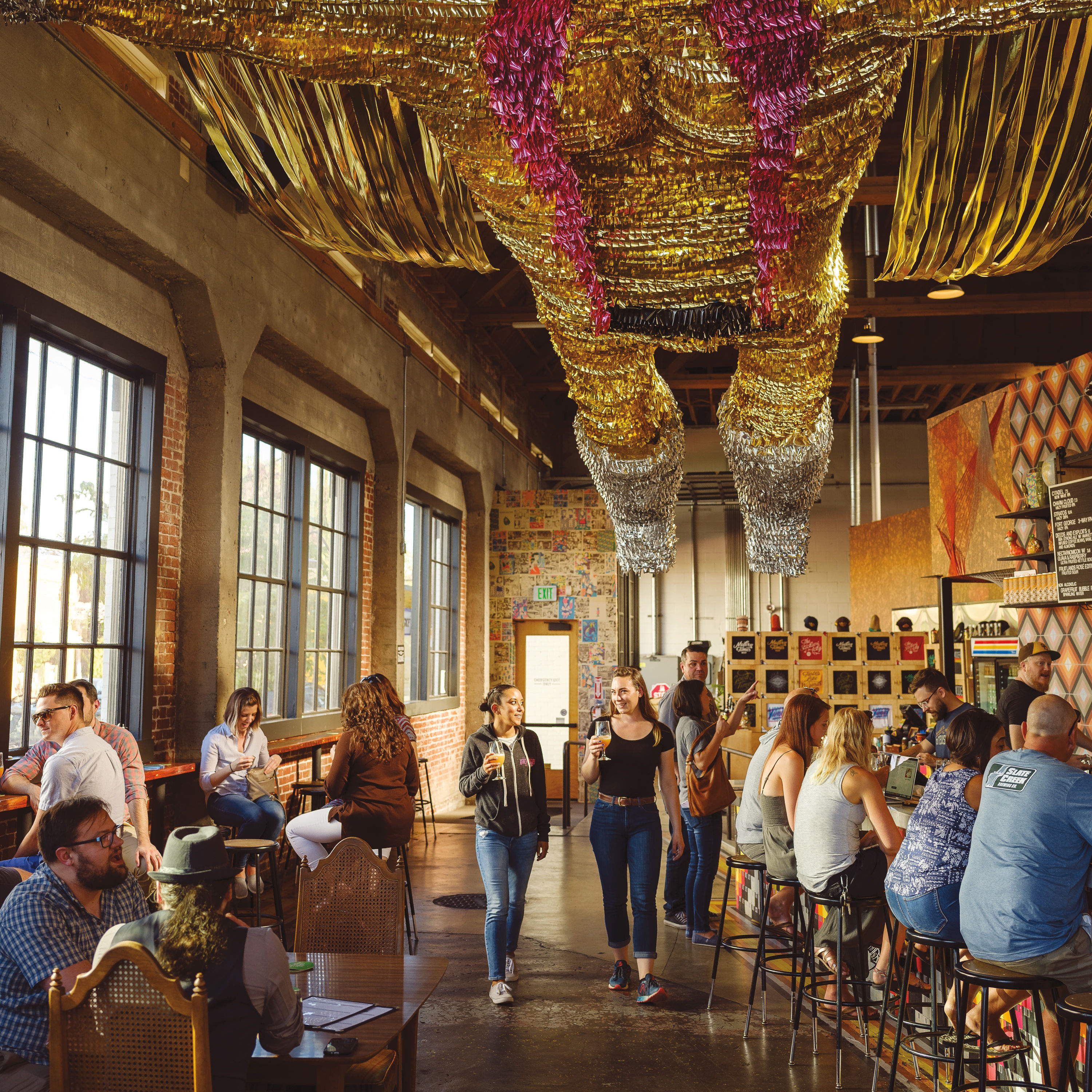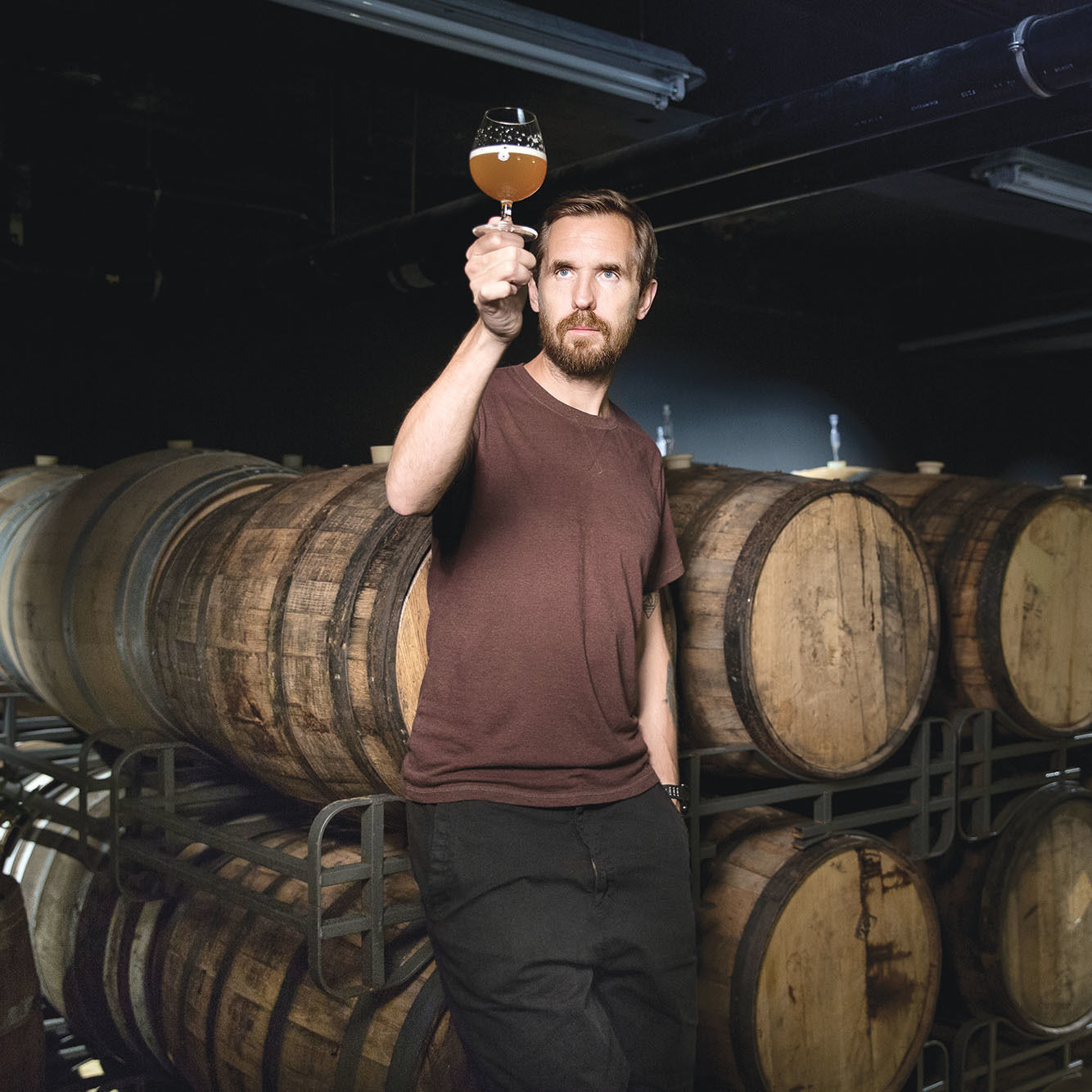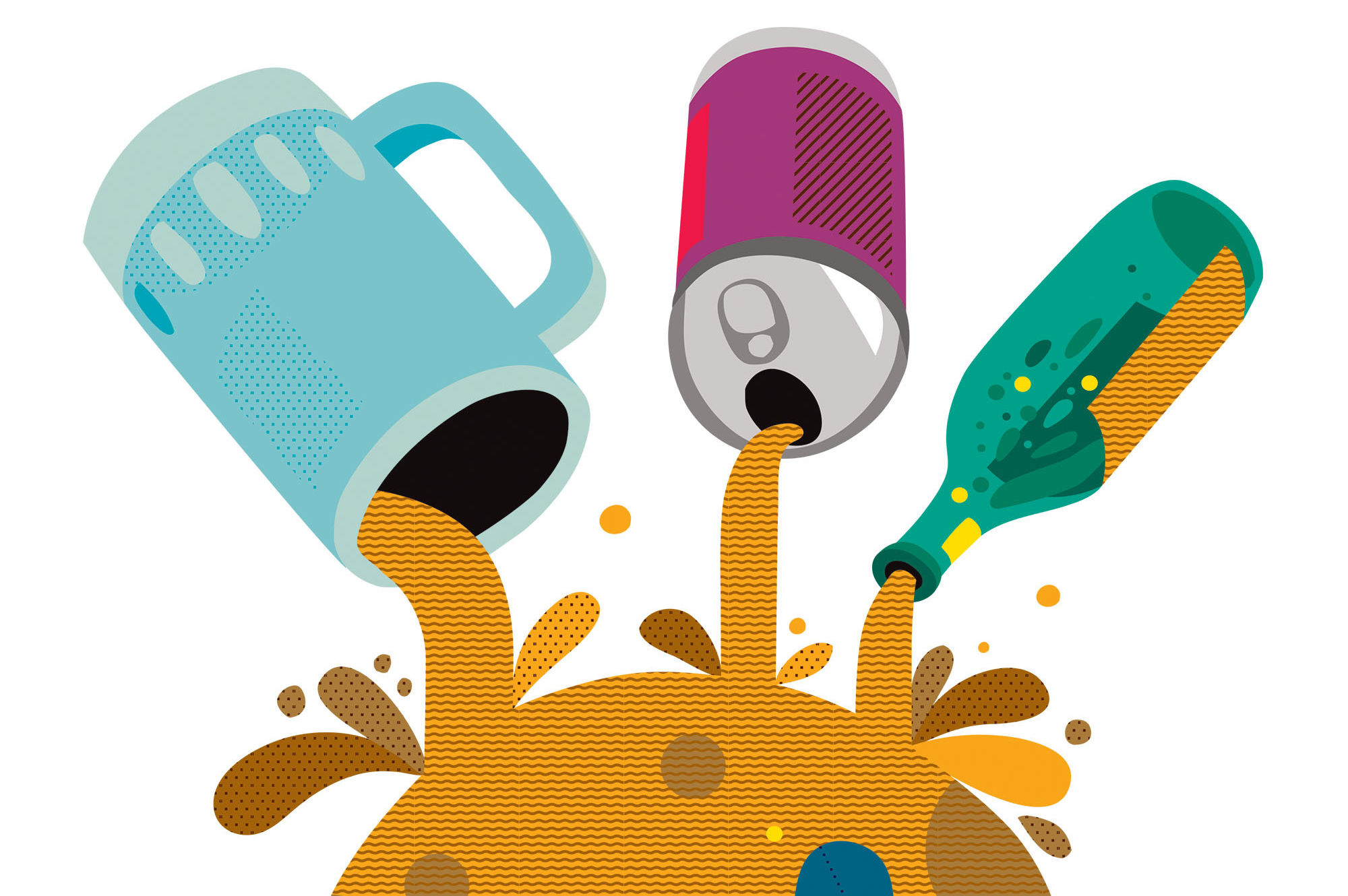Portland Women Love Craft Beer. Why Doesn’t It Love Them Back?
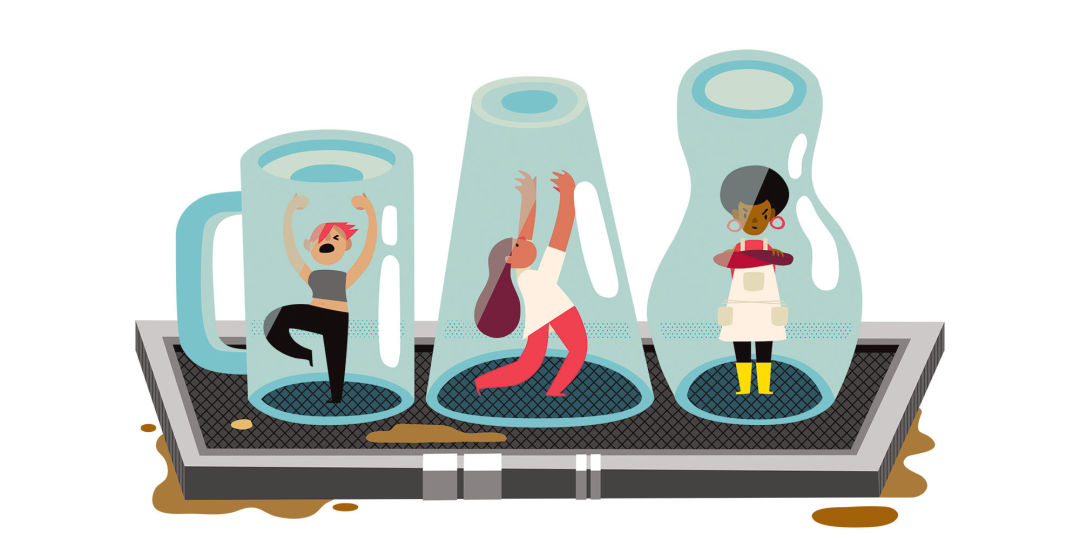
Image: Alex Eben Meyer
About two years ago I attended a holiday dinner in McMinnville. To my right sat the host, a recently retired general contractor. Let’s call him Al. Al was an enthusiastic and opinionated collector of Willamette Valley wines, the kind of guy who breaks out a magnum at special events. Over plates of meat and potatoes, I asked if he’d heard of Leah Jørgenson, an up-and-coming winemaker we’d just written up in this magazine.
Al wasn’t familiar with Jørgenson. But he assumed that she didn’t make bold, expressive wines—like female winemakers in general, he said. According to Al, women made delicate wines, and sometimes those were good for pairing with a light appetizer. But he was more of a pinot man. To close this loop: Al just kinda liked wine made by guys.
That’s essentialism: the kind that assigns genders to Mother Earth and the Heavenly Father. In a time when gender is a playground and personal pronouns are chosen, Al’s views on booze felt retrograde to me—vanishing, even. But in the two years since that dinner, that essentialism has proven very much alive, and still thriving in industries from tech (men: good at STEM) and health care (women: naturally nurturing) to wine and beer.
Especially beer. Beer, where about 95 percent of American brewmasters are men—and mostly white men. Where you don’t need my help visualizing the reigning marketing ploy for blonde ales (Gig Harbor’s Giggly Blonde, Hop Valley’s Double D) even as nearly 32 percent of the nation’s craft beer drinkers identify as female—in Portland, that number is a whopping 53 percent. Where, as of press time, the bylaws of the Oregon Brewers Guild, drafted in 1992, still relied on the default male pronoun like some Enlightenment screed on natural law: “such of his powers as he may deem necessary.”
All of which elicits a sort of generalized shrug from the brewing industry—a version of that Silicon Valley diversity apathy eviscerated in publications like the Atlantic. “We’d like to get more ladies up in this here brew-house” is the reaction, “but they’re not applying/aren’t qualified.”
I kind of get it. After all, America’s young craft beer industry has (till recently) done just fine without overtly courting half the population. In the past decade, American craft beer has climbed to 13 percent domestic market share, cutting into the macrobrewers; from 2017 to 2018, the number of craft breweries rose 13 percent, to more than 7,300 nationwide. This year, for the first time since these stats were tracked, new craft beer drinkers reflected an even gender split, according to the Brewers Association, a national trade group.
And yet, American craft brewers actually sold fewer pints last year, amid broad speculation that we’ve hit peak beer. (See our story here for more on that controversy.) Wrote the association’s chief economist this time last summer: “There is clearly work to be done in marketing the amazing beers and brands of small and independent brewers to different communities across the US.” Then, he shrugged: “I won’t pretend to have the answer as to how.”
How, then? Breweries can, and likely might, try to reach new markets though basic pandering—maybe even slapping a scantily clad Thor or Magic Mike on that blonde ale for some equal-opportunity objectification. But unless craft brewers make the shift from apathy to active change, they’ll still be punting on the real problem: the diversity of the industry itself.
Here’s what happens with status quos. They get inside our heads and feed themselves. The result is social self-sorting—fewer trying, fewer applying (shades of Silicon Valley again). An April 2019 Stanford study showed the ugly side of entrenched gender roles: people now think they just kinda like beer made by guys. In an assessment of perceived quality of consumer items, the researchers presented volunteers with various product labels, changing only the maker’s name. For cupcakes, “male” bakers fared as well as the ladies. But for craft beer, labels with female-named producers were consistently scored a full letter grade below the same label with a male name.
Said one of the study’s authors, quoted in Stanford Business: “What we’re seeing here is that woman-made goods for sale in male-typed markets are being penalized for no reason other than the fact they are made by women.”
To thrive, movements (and industries) need momentum, and vision. The logical next step is to change up the makers, which over time can change minds and diversify drinkers. Those women, people of color, and others who (allegedly) aren’t applying? They’re here, from the now-national Pink Boots Society to SheBrew and the nascent Queers Makin’ Beers. Craft beer can do better than tech, and Beervana—where women already outnumber the gents—is the right place to start.
